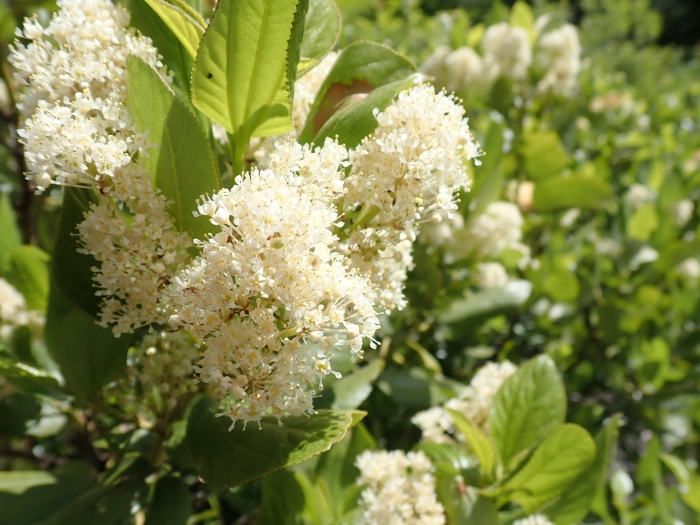Snowbrush Ceanothus
(Ceanothus velutinus)
Snowbrush Ceanothus (Ceanothus velutinus)
/
/

John Brew
CC BY 4.0
Image By:
John Brew
Recorded By:
Copyright:
CC BY 4.0
Copyright Notice:
Photo by: John Brew | License Type: CC BY 4.0 | License URL: http://creativecommons.org/licenses/by/4.0/ | Rights Holder: John Brew | Publisher: iNaturalist | Date Created: 2020-06-30T19:01:05Z |































































Estimated Native Range
Summary
Ceanothus velutinus, commonly known as Snowbrush Ceanothus, is an evergreen shrub native to the dry, open forests and mountain slopes of the Northwestern USA and Southwestern Canada. It typically grows up to 4 meters tall but often remains under three meters, with a rounded to irregular form. The dense foliage is characterized by glossy, dark green leaves that have a velvety texture and a strong, balsam-like scent. During late spring to early summer, Snowbrush Ceanothus produces showy inflorescences consisting of long clusters of small, white flowers that are highly attractive to pollinators. The fruit is a distinctive three-lobed capsule that explosively dehisces to disperse seeds, which can remain viable in the soil seed bank for centuries. The seeds have a hard coating that requires scarification to germinate, often provided by wildfire.
Snowbrush Ceanothus is valued for its drought tolerance, wildlife habitat enhancement, and its use in fire-prone landscapes due to its fire-adaptive traits. It is commonly used for revegetation projects, erosion control, and as an ornamental in xeriscaping. This species thrives in full sun, requires little water once established, and prefers well-drained soils. It is not particular about soil pH, tolerating both acidic and alkaline conditions. While generally low-maintenance, it can be susceptible to fungal diseases in wet or humid climates. Additionally, its vigorous root system can make it difficult to remove once established.CC BY-SA 4.0
Snowbrush Ceanothus is valued for its drought tolerance, wildlife habitat enhancement, and its use in fire-prone landscapes due to its fire-adaptive traits. It is commonly used for revegetation projects, erosion control, and as an ornamental in xeriscaping. This species thrives in full sun, requires little water once established, and prefers well-drained soils. It is not particular about soil pH, tolerating both acidic and alkaline conditions. While generally low-maintenance, it can be susceptible to fungal diseases in wet or humid climates. Additionally, its vigorous root system can make it difficult to remove once established.CC BY-SA 4.0
Plant Description
- Plant Type: Shrub
- Height: 3-8 feet
- Width: 3-8 feet
- Growth Rate: Moderate
- Flower Color: Cream, White
- Flowering Season: Summer
- Leaf Retention: Evergreen
Growth Requirements
- Sun: Full Sun, Part Shade
- Water: Low, Medium
- Drainage: Fast, Medium
Common Uses
Bee Garden, Bird Garden, Butterfly Garden, Drought Tolerant, Erosion Control, Fragrant, Groundcover, Hummingbird Garden, Low Maintenance, Showy Flowers
Natural Habitat
Dry, open forests and mountain slopes
Other Names
Common Names: Red Root , Tobacco Brush , Big Buck-Brush
Scientific Names: Ceanothus velutinus , Ceanothus grandis
GBIF Accepted Name: Ceanothus velutinus Douglas